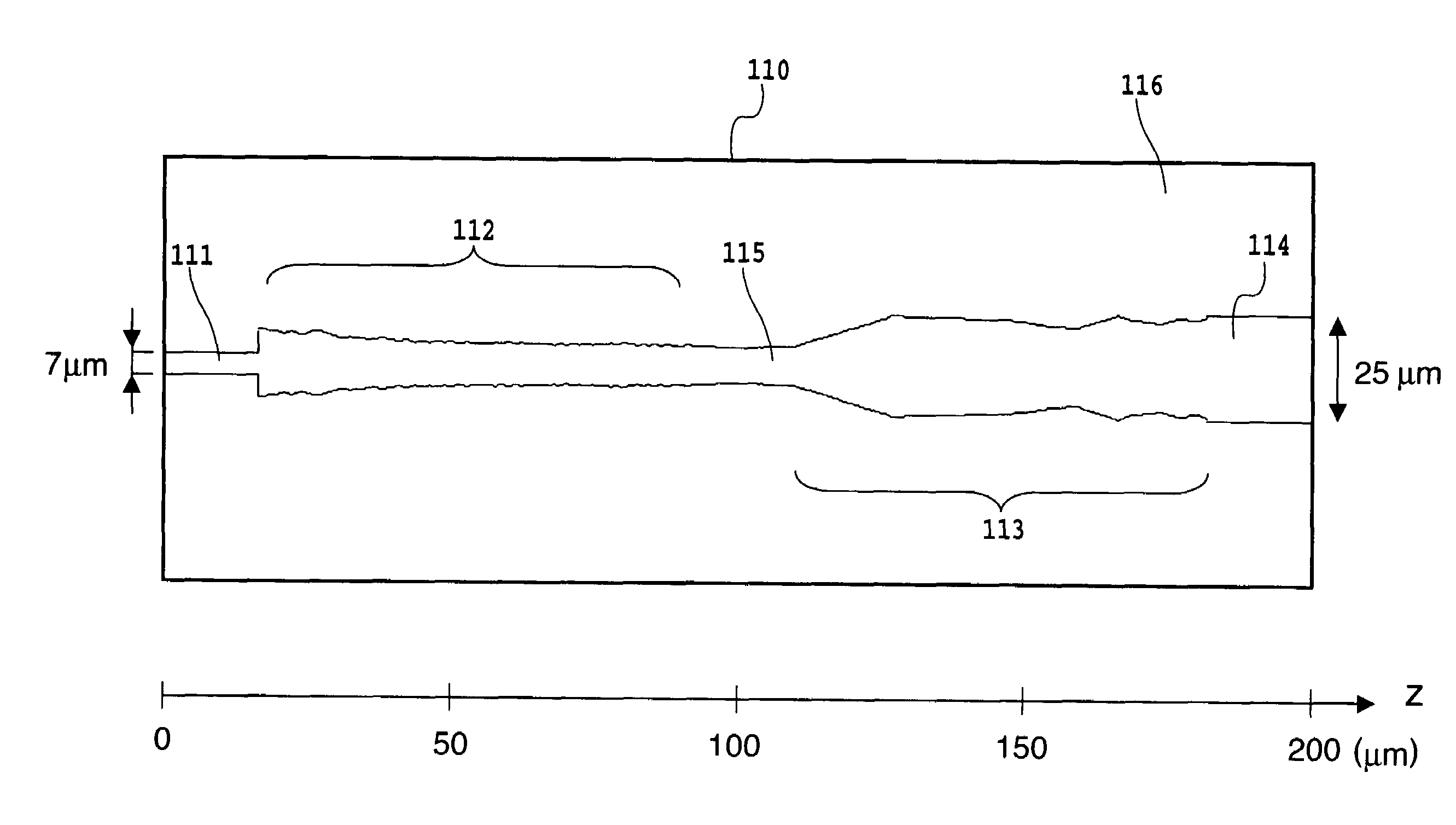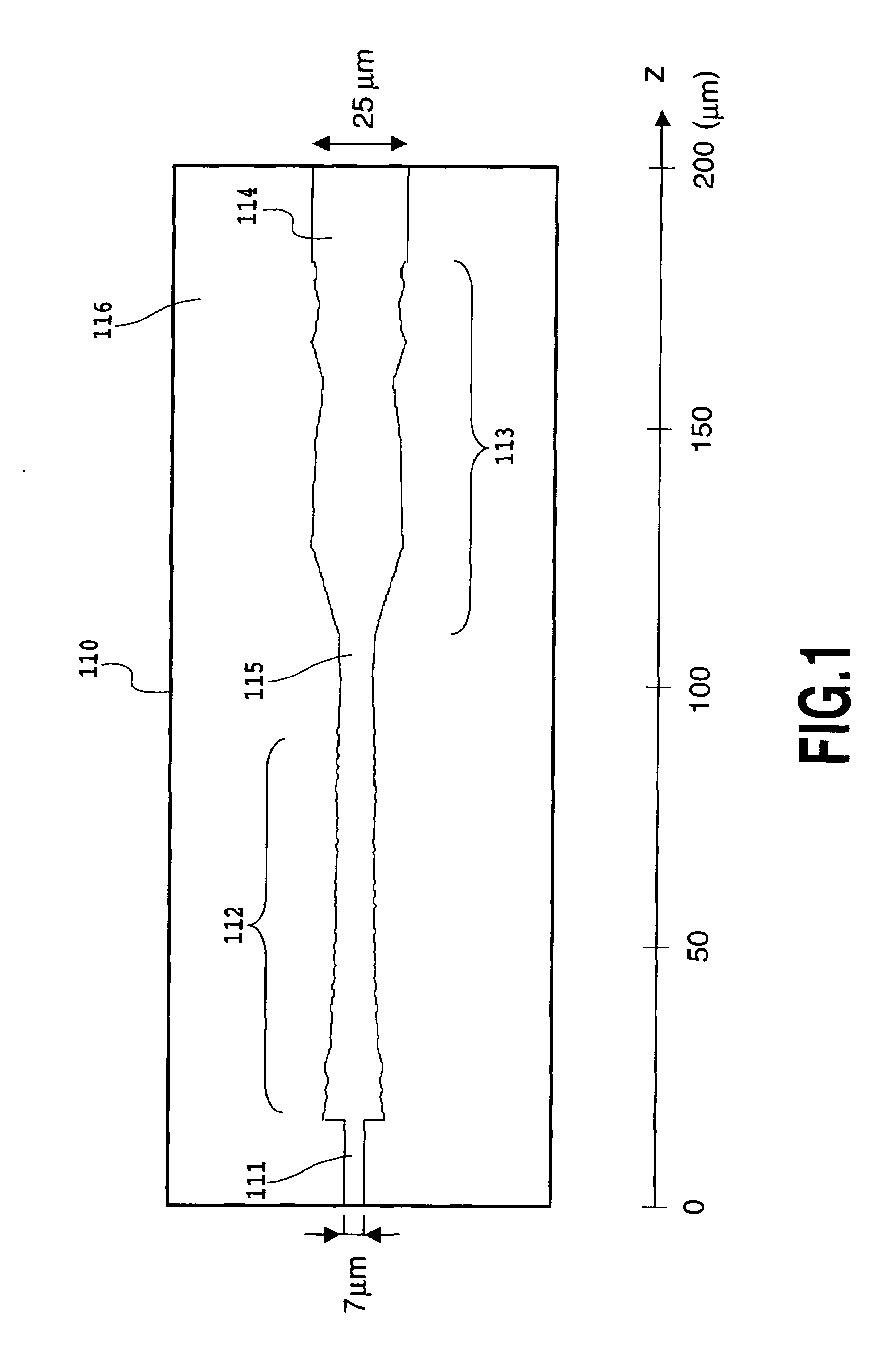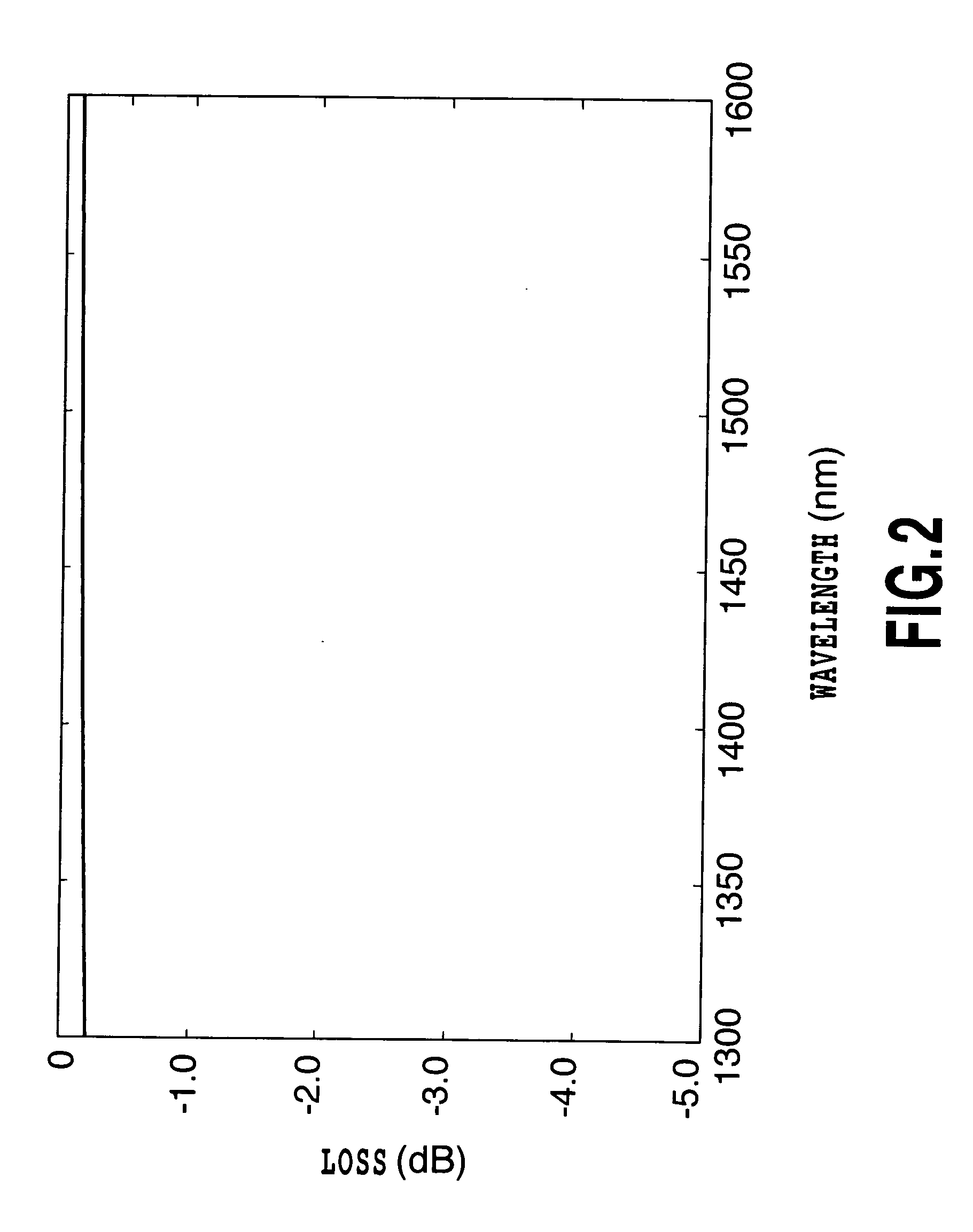Planar Lightwave Circuit, Design Method for Wave Propagation Circuit, and Computer Program
a technology of wave propagation circuit and planar light wave, applied in the direction of optical waveguide light guide, instruments, optics, etc., can solve the problems of light field which can be realized, lightwave circuit cannot be utilized as a transmission type device, and fabrication is very difficult, so as to achieve easy fabricated effect and low loss
- Summary
- Abstract
- Description
- Claims
- Application Information
AI Technical Summary
Benefits of technology
Problems solved by technology
Method used
Image
Examples
first embodiment
[0106]The first embodiment of the invention will be described with reference to FIGS. 1 and 2.
[0107]FIG. 1 is a plan view in which an optical waveguide lens (planar lightwave circuit) according to the first embodiment is seen in a direction perpendicular to a substrate. A z-axis indicates the propagation direction of signal light. Here, the optical waveguide lens is supposed in FIG. 1, and this is because the planar lightwave circuit according to the invention is excellent for realizing the lens or the like function which is difficult to be realized by only a propagation mode. However, the planar lightwave circuit according to the invention is not restricted to this embodiment, but it can be configured as a planar lightwave circuit having another function, such as spot size converter.
[0108]As shown in FIG. 1, the optical waveguide lens (planar lightwave circuit) according to the first embodiment is configured of an input optical waveguide 111 which inputs the signal light, mode coup...
second embodiment
[0120]Next, the second embodiment of the present invention will be described with reference to FIG. 3.
[0121]An optical waveguide lens (planar lightwave circuit) according to the second embodiment is a modification to the optical waveguide lens (planar lightwave circuit) according to the first embodiment.
[0122]FIG. 3 is a plan view in which the optical waveguide lens (planar lightwave circuit) according to the second embodiment is seen in a direction perpendicular to a substrate. A z-axis indicates the propagation direction of signal light. Mode coupling means 112 and mode re-coupling means 113 are configured unitarily as mode coupling / re-coupling means 131. Incidentally, the modulated core width of a waveguide can be formed by the same method as that of the optical waveguide lens (planar lightwave circuit) of the first embodiment.
[0123]As shown in FIG. 3, the mode coupling means 112 and the mode re-coupling means 113 need not have the configurations independent of each other as show...
third embodiment
[0124]Next, the third embodiment will be described with reference to FIGS. 4 through 6.
[0125]Whereas the above embodiments have indicated the examples of the planar lightwave circuits in each of which the core width of the optical waveguide is varied in the direction parallel to the substrate, a planar lightwave circuit in the third embodiment according to the invention indicates an example in which the core width of a waveguide is varied in a direction perpendicular to a substrate, that is, in a depthwise direction.
[0126]Even when the core width of the waveguide is varied in the direction perpendicular to the substrate, similar advantages can be attained. Signal light has the property that a distribution is more liable to spread in the depthwise direction. Therefore, when the core width is varied in the depthwise direction, a rather greater advantage is attained, that is, the advantage of lowering a loss attendant upon propagation is enhanced.
[0127]Shown in FIGS. 4 and 5 is the exa...
PUM
 Login to View More
Login to View More Abstract
Description
Claims
Application Information
 Login to View More
Login to View More - R&D
- Intellectual Property
- Life Sciences
- Materials
- Tech Scout
- Unparalleled Data Quality
- Higher Quality Content
- 60% Fewer Hallucinations
Browse by: Latest US Patents, China's latest patents, Technical Efficacy Thesaurus, Application Domain, Technology Topic, Popular Technical Reports.
© 2025 PatSnap. All rights reserved.Legal|Privacy policy|Modern Slavery Act Transparency Statement|Sitemap|About US| Contact US: help@patsnap.com



